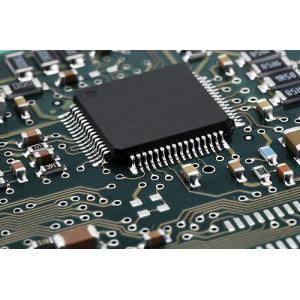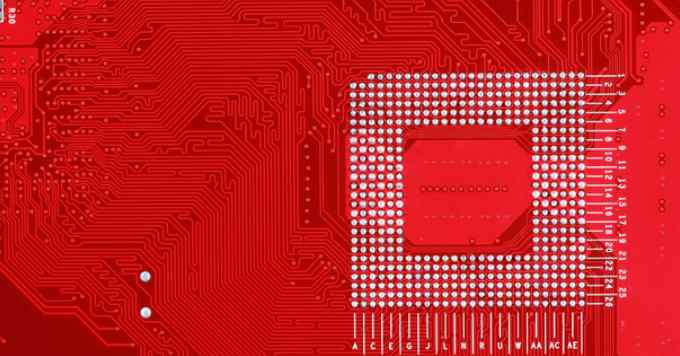
1. The small power supply of PCB board is preferentially coated with copper in the signal layer, and then connected through the current-carrying wire;
2.If the 12V or 5V power supply is the input power of the switching power supply, it is preferred to dispose it at the signal layer (surface layer and inner signal layer). If it must be divided at the plane layer, do not use it as the reference plane of important signal lines.This can effectively reduce the effect of such "high" pressure on the signal;
3. If the segmented power plane is used as the reference plane of signals, the power plane has priority as the signal reference plane of the power module; If there are multiple power supplies, the power supply with low voltage is preferred. For example, if the DDR3 module uses 1.5V power sources, the 1.5V power plane can be used as the signal reference plane for the DDR3 module. Do not use 3.3V power supplies or other power supplies. (DDR3 data refers to the ground plane, and address control signals refer to the power plane.)
4.The PCB board power plane is closely adjacent to the ground plane. If the power plane is adjacent to the signal layer, fill more GND copper in the signal layer as far as possible and punch through the GND holes.
5. The dividing line width should be reasonable; The width of the dividing line is related to the voltage difference between the two power supplies. It is generally recommended that the dividing width between modules be 25mil; The segmentation width between the numbers is 15mil, and local parts can be smaller; The width of the dividing line can also be adjusted flexibly according to the space on the board. In principle, the bigger the better;

6. The separation and isolation width of the housing is preferentially 2mm, and the local area is adjusted according to the situation. The general requirement is not less than 1mm; Other signals are far away from the housing ground, including signal lines, holes, copper laying, etc.
7. If the power supply/ground plane is divided, pay attention to the signal lines of the adjacent signal layer shall not cross the division, and try to avoid the crossing of high-speed signals on the divided reference plane.
8. The divided power supply hole avoids the isolation belt, and the isolation belt avoids copper, which will cause the power supply hole is not connected;
9. For the power supply in the analog area, in order to reduce the influence of the power supply on the signal, it is generally not recommended to lay a large area of power network copper, which is generally disposed at the signal layer. It is enough to lay copper in the power supply or route to meet the current load.
10. High voltage power supply and low voltage power supply to partition, the greater the spacing is better; Avoid high-voltage interference with low-voltage power supplies and signals;
11. Common creepage avoidance spacing:
(1) When voltage < 24V, the surface cover welding resistance, spacing ≥0.13mm; Surface without cover welding resistance, spacing ≥0.64mm
(2) When 24V≤ voltage < 48V, primary side spacing ≥0.5mm, secondary side spacing ≥0.2mm;
(3) When 48V≤ voltage < 100V, spacing ≥1mm
(4) When 100V≤ voltage < 200V, spacing ≥1.5mm
(5) When 200V≤ voltage < 400V, spacing ≥2.5mm
(6) When 400V≤ voltage < 600V, spacing ≥3.2mm
(7) When the voltage is more than 600V, the spacing is more than 5mm
12. Verify that the power supply and the ground can carry enough current. Check whether the number of holes meets the load-bearing requirements
(Estimation method: 1A/mm line width for outer copper thickness of 1oz, 0.5A/mm line width for inner copper thickness)
13. In order to reduce the edge radiation effect of the plane, the 20H principle should be satisfied as far as possible between the power layer and the ground.
(If conditions permit, the more indent the power layer, the better).
The "20H rule" means to ensure that the edge of the power plane is at least 20 times as indent as the edge of the ground plane (0V reference plane), where H is the distance between the power plane and the ground plane.
Why the 20H rule?
In high-speed PCB, RF energy is usually coupled between the power plane and the ground plane, resulting in edge flux leakage, and RF energy (RF current) will radiate out along the edge of the printed circuit board. In order to reduce this coupling effect, the physical size of all power planes should be 20H smaller than that of the nearest ground plane.
14. If ground division exists, check whether the ground avoided by division does not form a loop?
15. Is overlapping of different power planes on adjacent floors avoided?
16. Is the isolation between the protection ground and GND greater than 4mm?
17. Check whether a 10-20 mm protective ground is placed near the connector panel and two rows of staggered holes are used to connect layers.
18. Check the effective wiring width of the power supply: whether there is interruption of positive and negative copper (BGA, hole density, and high-speed bus at hole density), pay attention to 0.8mmBGA.







